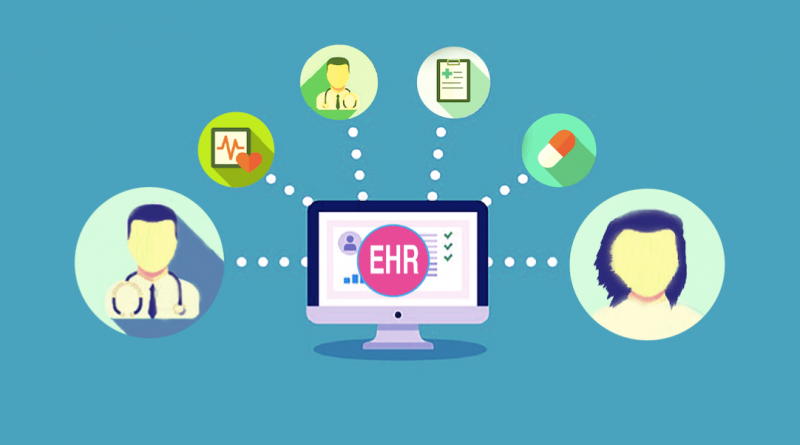5 reasons why your EHR isn’t enough for success in value-based care
Post Content
5 reasons why your EHR isn’t enough for success in value-based care
Some people who run independent medical practices recently had to say if they thought value-based care was going to stay or go away soon. Eighty percent of the people who were asked agreed. We asked them what might keep them up at night in 2018. A lot of people changed their habits as a response to the news If it’s positive, most practices can’t keep up with this level of commitment, even if they want to. As for expertise, staff, and workflow, most practices try to get by with what they have right now. manufacturers of legacy EHRs, like Meaningful Use, think that they’ll play a big role as practice technology in the new era of value-based health care. False. Value-based care shows that there are five flaws in legacy EHRs that must be fixed in order to hold clinicians accountable for the total quality and cost of their care.
EHRs were built to automate a fee-for-service world.
Under a fee-for-service model, electronic health records must be used (EHRs). These apps can be used to make billing codes with the information they have on them In the Merit-based Incentive Payment System and other payment models, they often don’t say they have comorbidities or follow evidence-based care paths.
Interoperability is poor.
A lot of issues with interoperability When primary care doctors (PCPs) look at a patient’s health, they are more and more relying on technology to get the whole picture. If you want to connect with other EHRs, care management apps, lab information systems, hospital feed data, and pharmacy information, you’ll need more EHR capabilities and processes.
EHR analytics are incomplete.
The EHR metrics aren’t right. Value-based care requires providers to compare and evaluate the quality and costs of their patients’ care. Unstructured or missing clinical data in the EHR makes it hard to come up with quality indicators, but payer claims data is completely missing.
Patient portals do not equal patient engagement.
Patients may not be able to use portals. A lot of people used to be able to see their own medical information and have private, encrypted conversations with other people. It’s important for people with value-based health care standards for them to be able to manage emergency symptoms and care transitions in real time on a regular basis.
Fee-for-value workflows are broader and more complex than an EHR can support.
There are too many and complicated fee-for-value workflows for an EHR to be able to handle on its own, When it comes to value-based care, all of the members of the care team need to be involved, even if the patient is at home.
Value Based Care of EHR
People who work in healthcare are changing their electronic health records (EHRs) because of the rise of value-based care (VBC) (EHRs). The ability to understand clinical treatment regimens, communicate with pharmacists and care partners, and make sure patients are meeting their health goals and moving in the right direction is more important than ever before.
Since the CMS meaningful use program started about 11 years ago, doctors have been making changes to their Patient Handoff Tool. Many people think 2020 will be a big change. As many as two-thirds of doctors and ambulatory care providers plan to change their EHRs in 2019. Using EHRs for telemedicine and better treatment coordination with payer partners are two of the most important ways they are being used now.
When we talk about replacing EHRs, we need to think about how technology can help clinicians be ready for the future of VBC. Due to the rapid growth of these models, time is very important: Humana, Blue Cross, and Medicaid agencies across the country started putting VBC initiatives into place as early as January 2020.
With EHR replacement providers, the stakes are very high when it comes to finding the right new technology for them to use.
People who use technology should think very carefully about what they want to do with a solution that looks good and works well in a demo before they use it in real life. Physicians are looking for technology that is simple to use and helps them with their clinical work. Having VBC-compliant equipment that can adapt to new standards as they are put in place is also important, but not the only thing.
At the start, there were medical issues. It was hard to record because many older EHRs had a lot of apps and notifications already built in, making it hard to record. Medical cautions and reminders sent to the same person are common, according to a study from 2013. Doctors were less likely to listen to the warnings they were given when they were overloaded with them.
Another problem with the old EHRs was that they took a long time and made doctors tired. Medscape’s National Physician Burnout, Depression, and Suicide Report 2020: The Generational Divide found that more than 40% of boomer-aged doctors have a hard time with their jobs because of EHRs.
According to another poll, there has been a big rise in physician burnout since the introduction of EHRs. Researchers at the University of New Mexico say that EHRs are to blame for 40% of the stress that clinicians feel. Overworked doctors hope that an improved EHR will cut down on paperwork and interactions that aren’t necessary.
Another reason why an EHR needs to be more careful is because of regulations. Among them are the ONC Health IT Certification Program and the 21st Century Cures Act: Interoperability, which are both about making things work together. It is very important that they work well together in order to encourage care cooperation and to keep up with VBC’s core values of quality, efficiency, and results.
EHR Replacement Checklist
As a VBC provider, you should choose an EHR that meets your needs, not just what you want. What should be on a drill checklist?
Is power something you care about? The best thing to do instead of the original. The electronic health record (EHR) should be flexible, with templates that can be changed to make everything, from buying drugs to looking at patient information, more simple. People should be able to work together at least in the EHR. It’s important for primary care providers to be able to quickly communicate with other members of an ACO or other group that shares the costs of care. This way, everyone will know what is going on.
It’s up to you to decide whether or not your employees will use this. As electronic health records (EHRs) become more common in the healthcare field, many doctors and nurses are worried about how they will work with them instead of paper records. Employees need to be on board with new technology in order for it to be installed and used well, as we’ve learned from our mistakes over the last decade. To make sure that clinicians are there when new technologies are put in place, practice leaders need to make sure that they are there first.
No, providers don’t get anything from this. The vast majority of patient encounters, especially those involving common illnesses like influenza, are easy to understand and deal with. Changeable templates based on the most common patient scenarios can help smarter EHRs improve compliance and speed up charge entry for faster invoicing. When a patient with a common medical condition comes to the doctor’s office, a smarter EHR may already have filled in fields with information that is relevant (e.g., symptoms, medication orders, etc.). Because clinicians don’t have a lot of time and money, they may choose to spend more time with the patient than write down everything that happens during the visit.
Take advantage of the help that is available to you. When you use the right smart EHR, it can automatically fill in data fields, aggregate data, and make sure that treatment is planned, given, and paid for in a streamlined way. While technology can be a problem at times, we still need it. With the right vendor, a business is never in the dark. Any snags or bottlenecks that happen and slow down the flow of work must be quickly fixed.
An electronic health record (EHR) could help a practice improve patient care and efficiency, as well as make it more ready for the next few years. We need to keep patient care at the top of our minds as we move away from fee-for-service models and toward Value-Based Care (VBC).
A lot of new collaborative care agreements, health plan rules, and legislation will be thrown at practices in the next few years. Make sure the future EHR can handle it.




